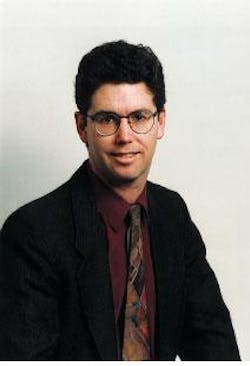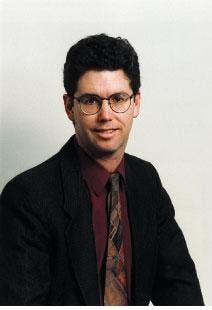Japan makes the connection
I've just returned from my first trip to Japan, where the weather was hotter than the wasabi. Fortunately, I was able to spend most of my time in quasi-air-conditioned comfort at the InterOpto '99 conference outside of Tokyo.
A walk among the booths revealed several of the trends now rippling through the Japanese component and cable market. One trend reflects a worldwide phenomenon: Companies from outside the traditional fiber-optic community are vying for a piece of our expanding market. For example, representatives from a zipper manufacturer sat me down to explain their new ceramic ferrule technology for SC connectors.
However, most of the market currents flow uniquely through Japan. The strongest of these involves the MU connector, a small-form-factor device that Nippon Telegraph & Telephone has adopted as standard issue. I invite those of you unfamiliar with the device to read the article on page 55 of our October 1998 issue, where you'll find a full description from a senior research engineer at NTT. It should not be surprising to discover that what NTT wants, it generally gets, particularly when you consider that until recently, the carrier was the only customer in town for most of the firms on view. (These companies also work closely with NTT Electronics Corp., the Japanese version of Bell Labs, in research and development, which further ties them to the country's national carrier.) What the carrier wants now is mass production, which means finding additional customers for the connector. Thus, says a source at Seiko Instruments, connector companies will begin to preach the MU gospel worldwide. The source expects Europe to be a more receptive audience, as the U.S. market is already sorting through more small-form-factor connectors than it can support.
Speaking of the U.S. connector wars, the advance of the MU in Japan may also prove beneficial to the LC's chances of global success. It turns out that the MU's 1.25-mm ferrule is quite similar to the ferrule within the LC, meaning that Japanese connector manufacturers can easily add the LC to their product lines. Several of these firms have already arranged licensing agreements with the LC's developer, Lucent Technologies, and other companies should soon follow.
Meanwhile, the Japanese faith in plastic optical fiber (POF) remains unshaken--at least on the surface. Several companies touted their POF wares--ALPS even demonstrated wavelength-division multiplexing (WDM) technology--and a POF conference ran concurrently with InterOpto. POF component vendors trumpeted the fact that Mercedes had recently decided to use plastic fiber for the audio systems in some of its cars. The inclusion of POF in standards for home networks, specifically IEEE 1394, also received significant attention. However, the ALPS demonstration of WDM for local area networks aside, I encountered few companies who saw great potential for plastic in premises applications outside the home. Privately over lunch one afternoon, a local editor confirmed that while he saw some potential for POF in IEEE 1394 applications and automobiles, glass and copper would remain the chief combatants for dominance in premises and campus networks.
Finally, a walk around the various NTT booths showed a wide variety of technologies under development. In addition to MEMS, NTT Electronics has its eyes on semiconductor optical amplifiers and Raman amplifiers, the former in particular for gate switches. Planar lightwave circuits, 20-mW distributed-feedback lasers for dense WDM, erbium-doped telluride fiber modules for 1500-nm and praseodymium-doped fluoride fiber modules for 1300-nm applications, and high-speed digital integrated circuits also caught my eye. NTT Advanced Technology, for its part, showed polymer wave guide technology.
InterOpto provided only a snapshot of the work now ongoing within Japan at the component end of the fiber-optic continuum. Certainly, it appears clear that the developments I saw in an exhibit hall outside Tokyo will have repercussions around the world.
Stephen M. Hardy
Editorial Director

